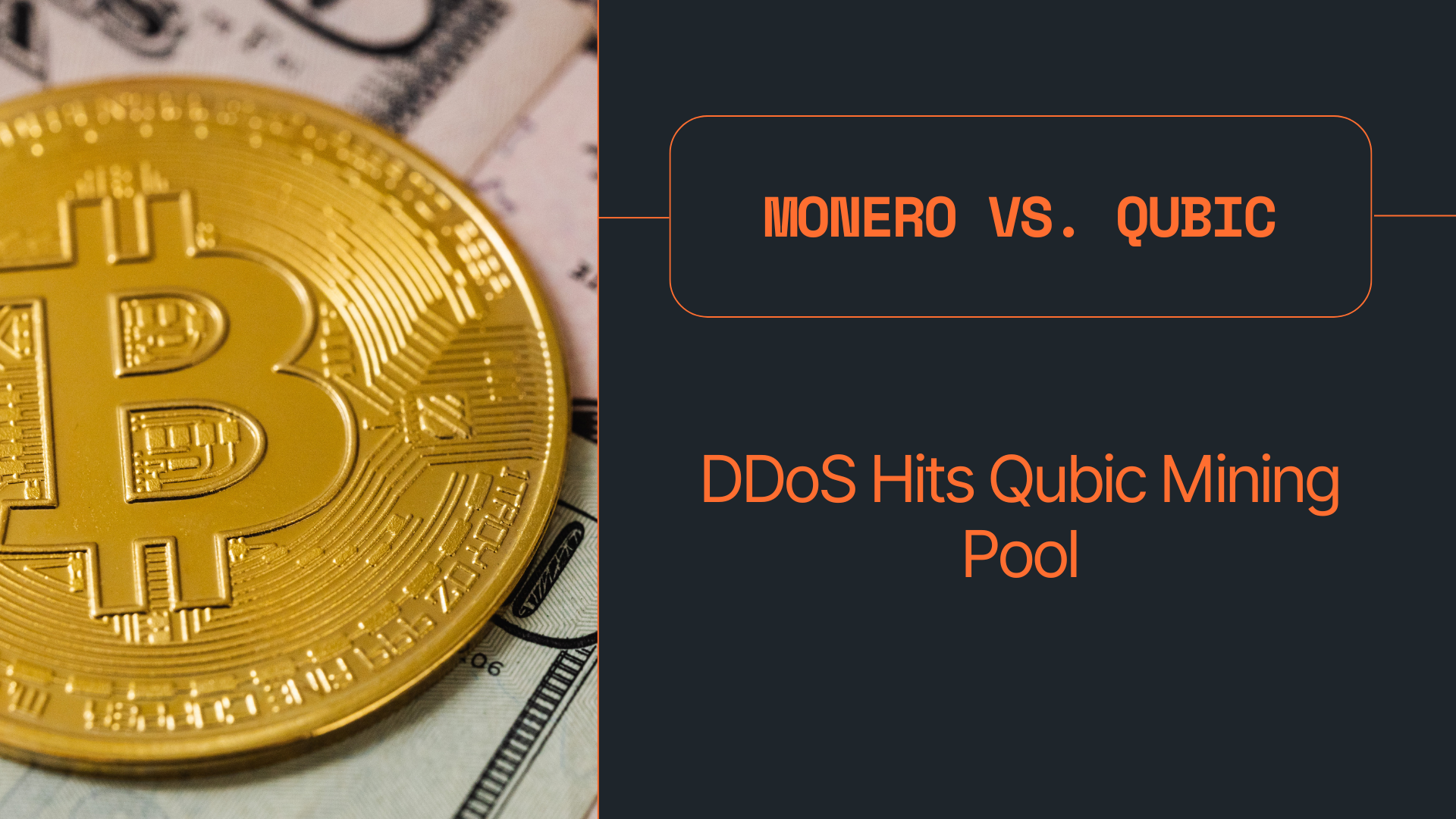
A controversial campaign by Qubic to concentrate Monero (XMR) mining power has devolved into a technical and narrative battle after Qubic’s mining pool was struck by a DDoS attack, disrupting its operations and visibility, even as on-chain trackers and miners debated the scale of the threat. Cointelegraph reports that Qubic’s pool stopped reporting hashrate on July 30, with the project’s own tracker intermittently claiming peaks up to 1.6 GH/s when its “intermittent mining” switches to Monero. MiningPoolStats, meanwhile, showed Qubic as the only Monero pool with no reported hashrate at press time.
The outage followed weeks of escalation, in which Qubic openly sought to attract miners away from other pools with richer payouts, a strategy critics labeled an “economic attack” designed to approach the 51% threshold required to orphan blocks, delay confirmations, or censor transactions. Coverage by The Block and Yahoo Finance highlighted growing community resistance and skepticism about Qubic’s motives, with some miners dismissing the campaign as a publicity play after talk of a “thwarted” 51% bid.
What happened—and why the DDoS matters
- Pool disruption: According to Cointelegraph’s account, the DDoS coincided with Qubic’s disappearance from public pool charts, complicating independent verification of its share of Monero hashrate. The project’s own dashboard claimed periodic spikes when its “intermittent mining” toggled into XMR, but external monitors did not confirm sustained dominance.
- Visibility & trust: Because pool shares guide miners’ decisions and inform the public about decentralization, a reporting blackout blurs risk assessment. MiningPoolStats still listed Qubic as active in name but with no live hashrate, underscoring the opacity created by the outage.
The 51% playbook Qubic signaled
Recent reporting outlines Qubic’s attempt to pay miners above-market rewards to redirect CPU power toward its pool—an approach that could, in theory, push a single operator over the critical 51% line. If achieved, that concentration could orphan competitors’ blocks, slow confirmations, or selectively censor transactions, without necessarily rewriting deep history. Multiple outlets framed this as an “economic” rather than purely technicalmaneuver, since it relies on incentives rather than exploiting a code bug.
Community forums and market briefings tracked Qubic’s share fluctuating well below majority control, with spikes that raised alarms but fell short of sustained dominance. Some analysts described earlier surges followed by retracements as evidence that decentralized miners were rebalancing toward alternative pools or P2Pool to dilute concentration.
Community and market response
- Counter-mobilization: Monero miners and node operators used social channels to redirect hash power away from Qubic, encourage the use of P2Pool (a decentralized pooling design), and publish live dashboards of pool concentrations to discourage complacency. CryptoSlate’s roundup captured the tone: a “live-fire” stress test that galvanized the community rather than splintering it.
- Narrative split: Yahoo Finance reported some miners lampooned the campaign as a publicity stunt, especially after claims of a “thwarted” 51% attempt coincided with token-price marketing by Qubic. Others warned against minimizing the risk, noting that pay-to-switch inducements can rapidly alter the picture when profitability shifts.
How close did Qubic get?
Pinning down a precise peak is difficult amid the reporting gap, but the absence of sustained majority share across independent trackers suggests the bid did not hold above 50% for a continuous period. Cointelegraph noted Qubic’s own tracking showed intermittent mining bursts, while public pool boards failed to corroborate a long-lived takeover. The Block similarly emphasized the controversy rather than confirmation of dominance.
What a real 51% event would mean for Monero
Security researchers and crypto-market educators typically underline that a 51% attacker cannot mint coins from nothing or steal funds from addresses, but can:
- Reorganize recent blocks to enable double spends against exchanges or merchants with insufficient confirmations;
- Censor or delay selected transactions;
- Undermine confidence in short-term finality, raising confirmation requirements and transaction costs network-wide.
Monero’s CPU-friendly RandomX algorithm and historically distributed mining have been intended safeguards against single-pool concentration, but as these events show, economic incentives can still pull hash power toward a single coordinator—especially during periods of heightened miner churn. (General mining-architecture references and pool dashboards illustrate why decentralized pooling like P2Pool is advocated by the community.)
Key signals to watch next
- Pool share dispersion: If public boards show persistent diversification—and Qubic remains below 20–25%—the immediate risk fades. A sharp rise back toward >40% would warrant renewed caution. MiningPoolStats remains a quick glance, though not definitive on its own.
- Transparency & uptime: Whether Qubic restores reliable hashrate reporting post-DDoS will determine how much of the debate is measurable versus speculative. Cointelegraph’s report linked the DDoS directly to the visibility issue.
- Exchange policy: If centralized exchanges raise XMR confirmation requirements or publish risk notes, that would indicate elevated operational concern even absent a confirmed takeover. (Standard practice during suspected reorg risk.)
- P2Pool adoption: Growth in decentralized pooling could become a structural hedge against future concentration cycles, reducing the likelihood of a single coordinator approaching 51%.
The bigger picture
The episode underscores a broader reality for proof-of-work networks: hashrate markets are dynamic, and financial incentives can challenge decentralization without a traditional exploit. Qubic’s gambit—followed by a DDoS that knocked its pool off public radars and a visible community counter-mobilization—is a reminder that security is economic as much as it is cryptographic. For Monero, the near-term takeaway is caution with complacency and renewed emphasis on distributed mining and operational transparency. For observers, it is a case study in how perception, data visibility, and incentives interact during alleged takeover bids.